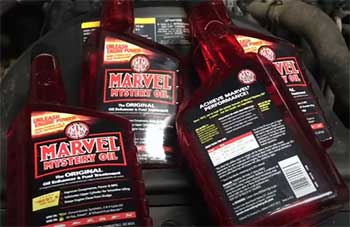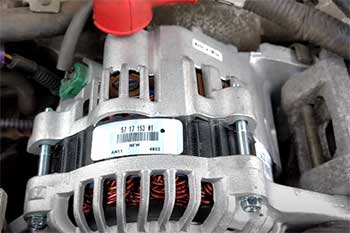Alright, folks, if you’re on the hunt for a suspension upgrade that won’t drain your bank account but still delivers a punchy ride, let me put Megan Racing coilovers on your radar. I’ve been tinkering with cars for years, and these bad boys caught my eye for their blend of affordability and performance.
Whether you’re chasing a slammed stance or tighter cornering, they’re a solid pick. Trust me, after putting them through their paces, I’m here to spill the beans—warts and all—so you can decide if they’re worth your hard-earned cash.
Spoiler: they just might be.
My Journey With Megan Racing Coilovers
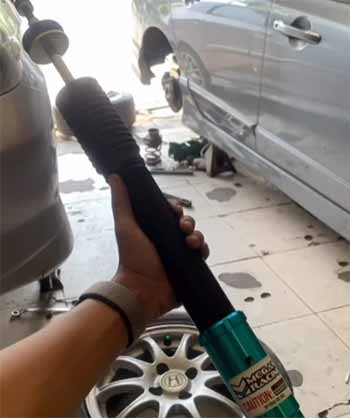
Let me take you back to last summer when I decided my daily driver—a trusty 2018 Honda Civic—deserved a glow-up.
The stock suspension was fine for grocery runs, but I craved something with more attitude, something that’d hug the curves on my weekend canyon drives.
After scouring forums and pestering my car buddies, I landed on Megan Racing’s Street Series coilovers.
The price tag—around $900—felt like a steal compared to the big-name brands, so I pulled the trigger.
Installation day was a mix of excitement and chaos.
I roped in my friend Jake, who’s handy with a wrench, and we got to work in my garage.
It took us about four hours, partly because we kept debating the perfect ride height.
The kit came with everything—front and rear coilovers, adjustment wrenches, even a little Allen key for the dampening knobs. Out of the box, they looked legit: beefy red anodized mounts, sleek black bodies, and springs that screamed “I mean business.”
I set them to about two inches lower than stock, dialed the dampening to 20 out of 32 (softer side), and hit the road.
First impressions?
Holy cow, the difference was night and day. The Civic felt glued to the pavement, with way less body roll through turns. I took it down my favorite twisty road, and it was like the car was begging me to push harder. Bumps were a bit more noticeable, sure, but nothing unbearable.
Over the next few months, I racked up about 5,000 miles—daily commutes, a few spirited drives, even a rainy road trip. They’ve held up like champs so far, but I’ve got plenty to unpack about the highs and lows. Stick with me—this is where it gets juicy.
Pros of Megan Racing Coilovers
I’ll be real with you: these coilovers have some serious bragging rights. Here’s what I’ve come to love after living with them.
- Wallet-Friendly Price Point
Let’s start with the obvious: Megan Racing coilovers are kind to your wallet. I paid under a grand for the Street Series, which is peanuts compared to brands like KW or Fortune Auto, where you’re easily dropping $1,500 or more.
For a budget-minded gearhead like me, that’s a huge win. You’re getting adjustable ride height and dampening—features you’d expect from pricier kits—without needing to sell a kidney. It’s not just about the upfront cost either; the value shines through when you realize they don’t skimp on the basics.
- Adjustability That Packs a Punch
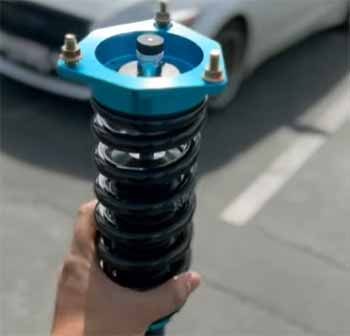
Speaking of adjustability, these coilovers let you play mad scientist with your suspension.
The 32-way dampening adjustment is a game-changer.
I’ve tweaked it from soft (around 10 clicks from full hard) for cruising to stiffer (20-25 clicks) for those backroad blasts.
Ride height’s a breeze to tweak too, thanks to the threaded bodies.
I dropped my Civic two inches initially, then raised it half an inch after scraping a speed bump—oops.
No spring compressors needed, just a wrench and some elbow grease.
It’s empowering to dial in the ride exactly how you want it.
- Handling That’ll Make You Grin
Here’s where they really shine: the handling. My Civic went from a tame grocery-getter to a corner-carving beast. The monotube design keeps things consistent, and the stiffer spring rates (8kg/mm front, 6kg/mm rear on my kit) cut body roll like a hot knife through butter.
I’ve taken turns I used to baby at speeds that’d make my mom faint, and the car stays planted. It’s not just me—my buddy Jake hopped in and said, “Dude, this feels like a different car.” If you’re into spirited driving, these will put a goofy grin on your face.
- Solid Build Quality for the Price
I was skeptical at first—cheap usually means cheap, right? But these coilovers surprised me. The anodized aluminum mounts feel sturdy, and the steel shock bodies have held up through rain, dust, and my less-than-gentle driving.
No leaks, no weird noises (well, mostly—more on that later), and the powder coating’s still intact. They’re not flawless, but for the price, the build quality punches above its weight. I’ve seen pricier kits rust out faster, so I’m pleasantly shocked here.
- Easy Installation for DIYers
If you’ve got basic tools and a friend who owes you a favor, installing these is a cinch. The kit bolts right up to my Civic’s OEM mounts, and the included wrenches made adjustments straightforward. No cryptic instructions or missing parts—just unbox, slap ‘em on, and go.
I’m no pro mechanic, but Jake and I had it done in an afternoon. If you’re into wrenching on your own ride, you’ll appreciate how user-friendly these are.
Cons of Megan Racing Coilovers
Alright, let’s flip the coin. These coilovers aren’t perfect, and I’ve hit a few bumps—figuratively and literally—along the way.
- Ride Comfort Takes a Hit
Here’s the deal: if you’re expecting a cloud-like ride, look elsewhere. Even on the softest setting, my Civic feels stiffer than stock—sometimes too stiff. Potholes jolt me more than I’d like, and rough city streets turn into a teeth-rattling experience.
I’ve gotten used to it, but my girlfriend complains every time she rides shotgun. For a daily driver, it’s a trade-off: you gain handling, but lose some cushiness. If comfort’s your priority, these might test your patience.
- Durability Questions Linger
Five thousand miles in, and they’re holding strong—no leaks or blowouts yet. But I’ve heard whispers from other owners about longevity issues, like worn pillow ball mounts or seized adjusters after a couple years. I can’t say for sure how mine will fare long-term, but it’s a nagging worry.
They come with a one-year warranty, which is nice, but premium brands often offer more peace of mind. I’m keeping my fingers crossed and my maintenance game tight.
- Noise Can Creep In
This one caught me off guard. After a few months, I started hearing a faint clunk from the front when turning tight corners—like at parking lot speeds. It’s not constant, and a quick check showed the top nuts were still tight, but it’s annoying.
Some folks say it’s the pillow ball mounts settling in; others blame dirt getting in there. Either way, it’s not a dealbreaker, but it’s something you might notice too. Silence isn’t their strong suit.
- Limited Rebuild Options
Unlike some high-end coilovers, Megan Racing doesn’t make rebuilding easy. If a damper blows or a mount wears out, you’re likely stuck buying a replacement part—or a whole new set.
I called their support once, and they were helpful, but they don’t offer a full rebuild service like Tein or BC Racing. For a track rat pushing these hard, that’s a bummer. I’m hoping mine stay trouble-free, because swapping springs or fixing a leak sounds like a hassle.
- Not the Lowest Slam
If you’re into the “stanced” life, dreaming of tucking tire, these might disappoint. They lower my Civic a decent amount—about 2.5 inches max—but they’re not designed for ultra-low drops.
The shock travel limits how far you can go before bottoming out becomes a daily nightmare. I scraped once or twice early on, so I raised them a bit. For moderate drops, they’re great; for scraping-frame vibes, you’ll need something else.
Maintenance Tips To Keep Your Megan Coilovers Happy
Owning coilovers isn’t just about slapping them on and forgetting—they need some love to stay in top shape. Here’s what I’ve learned to keep mine running smooth.
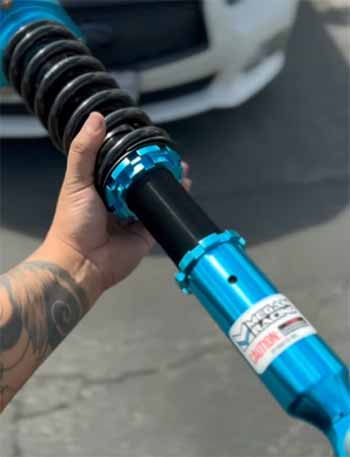
- Clean Them Regularly: Dirt and grime are coilovers’ worst enemies. I live in a rainy area, and after a wet drive, I noticed crud building up on the threads and mounts. Every month or so, I grab a rag, some soapy water, and wipe them down—especially the adjustment collars. A quick spray with a hose (low pressure!) gets the big stuff off, then I dry them with a microfiber towel. It’s tedious, but it keeps the adjusters from seizing up and the finish from pitting.
- Check and Tighten Everything: Those clunks I mentioned? They taught me to stay on top of things. Every couple months, I bust out my torque wrench and check the top nuts, lower mounts, and lock rings. Megan’s instructions say 17mm nuts can loosen over time, and they’re not kidding—I caught one slightly loose at 3,000 miles. A quick tighten, and the noise vanished. Don’t skip this; loose bits can wreck your alignment or worse.
- Lube the Threads: Adjusting ride height was a breeze at first, but after a few months, the threads felt gritty. I grabbed some anti-seize lubricant from the auto store and brushed a thin layer on the collars. It’s a lifesaver—keeps them spinning smooth and prevents rust. I do this every six months or after a big height tweak. Just don’t overdo it; too much goo attracts dirt.
- Monitor Dampening Settings: The 32-way adjustment is awesome, but don’t set it and forget it. I tweak mine seasonally—softer in winter for icy roads, stiffer in summer for fun drives. After each change, I drive a few miles and listen for weirdness. Once, I went too stiff (30 clicks), and the ride got bouncy; backing off to 20 fixed it. Keep a log of what works so you’re not guessing every time.
- Inspect for Wear: I pop the wheels off every oil change (about 5,000 miles) to eyeball the coilovers. Look for oil leaks on the shocks, cracks in the mounts, or sagging springs. So far, mine are clean, but catching issues early saves headaches. If you spot something funky, call Megan’s support—they’ve been decent about warranty claims from what I hear.
How Megan Racing Stacks Up Against the Competition?
Alright, let’s put Megan Racing coilovers head-to-head with some other players I’ve either tried or dug into—Godspeed, Rev9, and Tein FLEX Z. I’m breaking this down so you can see how they slug it out, based on my experience and some real-world chatter. Buckle up—this is where it gets fun.
- Megan Racing Vs. Godspeed Coilovers
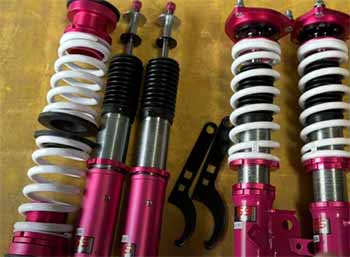
First up, Godspeed coilovers, priced around $800.
My buddy swears by his set on his Mazda 3, and I’ve ridden in it—smooth as heck over bumps, quieter than my Megans, and they’ve lasted him two years without a hiccup.
Megan’s Street Series, at $900, edges out slightly on handling; my Civic feels sharper in corners thanks to stiffer spring rates (8kg/mm front vs. Godspeed’s 7kg/mm).
But Godspeed wins on comfort—less jarring on potholes.
Installation’s a wash—both are DIY-friendly. If you want a cushier daily ride, Godspeed’s your pick; if you crave grip, Megan fights back hard.
- Megan Racing Vs. Rev9 Coilovers
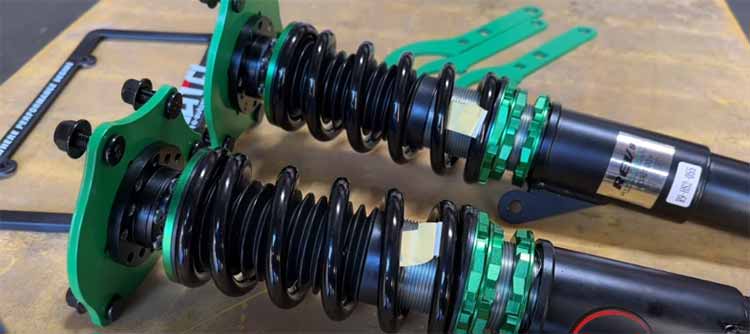
Next, Rev9 coilovers—I snagged a set for my old Integra years back, and they’re in the same $900 ballpark as Megan. Rev9’s build felt solid, with slick gold finishes, and they dropped my car low (2.5 inches easy).
Megan matches that drop but feels more planted—Rev9 had a bouncy vibe on hard turns, maybe from softer damping (16-way vs. Megan’s 32-way). Noise was a tie; both clunked a bit after a while. Rev9’s customer service was a headache when I needed a replacement part, though—Megan’s been more responsive so far.
For stance chasers, Rev9’s a looker; for drivers like me, Megan’s control wins.
- Megan Racing Vs. Tein FLEX Z Coilovers
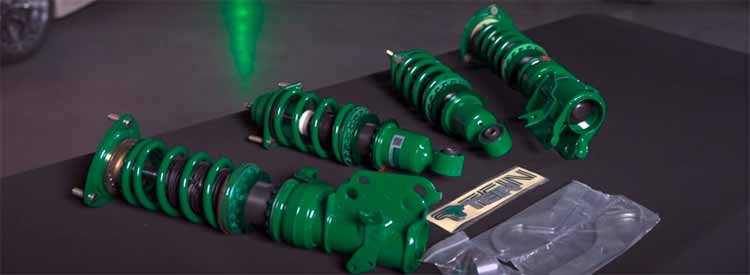
Now, Tein FLEX Z—my gold standard from a past ride, clocking in at $1,000. These were buttery smooth, with EDFC-ready damping that adjusted like a dream (16 levels, but precise).
Megan’s 32-way damping is more tunable, but Tein’s ride quality was less harsh—my girlfriend wouldn’t have griped. Tein’s rebuildable too; when a shock blew, I sent it in, no sweat. Megan’s a one-and-done deal—if mine fail, I’m buying new.
Handling-wise, Megan’s stiffer springs give it an edge on twisty roads, but Tein’s refinement shines on long hauls. If you’ve got the extra cash and want durability, Tein’s tempting; Megan’s the scrappy budget king.
So, where’s the knockout?
Megan Racing holds its own as the affordable champ—punchy handling, decent adjustability, and a price that doesn’t sting. Godspeed’s comfier, Rev9’s flashier, and Tein’s the polished pro, but Megan balances cost and performance like a tightrope walker.
Your call depends on your vibe: daily comfort, slammed looks, or premium feel. For me, Megan’s quirks are worth it for the grin I get carving corners. What’s your priority? Pick your fighter!
Frequently Asked Questions (FAQ)
Megan Racing doesn’t make their own coilovers—they’re produced by Bor-Chuann, a Taiwanese company that also pumps out BC Racing kits. I dug into this after noticing similarities, and it checks out. Megan’s based in California, designing and branding them, but the heavy lifting happens overseas. Solid quality for the price, though—no complaints there.
Not quite, but they’re cousins. Both come from Bor-Chuann, so the bones are similar—monotube shocks, adjustable designs. I’ve driven both, and BC feels more refined, with better damping and options like custom spring rates. Megan’s simpler and cheaper, though. Think of BC as the polished older sibling, Megan as the budget-friendly rebel.
Raising them is straightforward. Grab the included spanner wrenches, loosen the lower lock ring on the shock body, then twist the collar upward to lift the ride height. I did this after my speed bump scrape—took 10 minutes per corner. Tighten the lock ring back up, check both sides match, and you’re golden. Pro tip: lube the threads first to avoid a fight.
Conclusion: Should You Buy Megan Racing Coilovers?
After months of living with Megan Racing coilovers, I’m sold—and you should be too. They’re not flawless, but for under a grand, they transform your ride into something snappy and tunable without breaking the bank. Perfect for enthusiasts like me who want handling on a budget.
Sure, they’re stiff, and longevity’s a question mark, but the pros outweigh the cons if you’re not chasing perfection. Grab a set, tweak them to your liking, and enjoy the ride—you won’t regret it.
